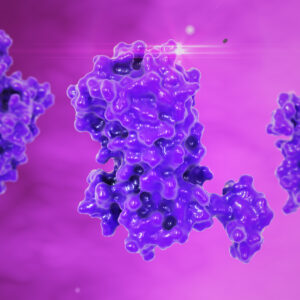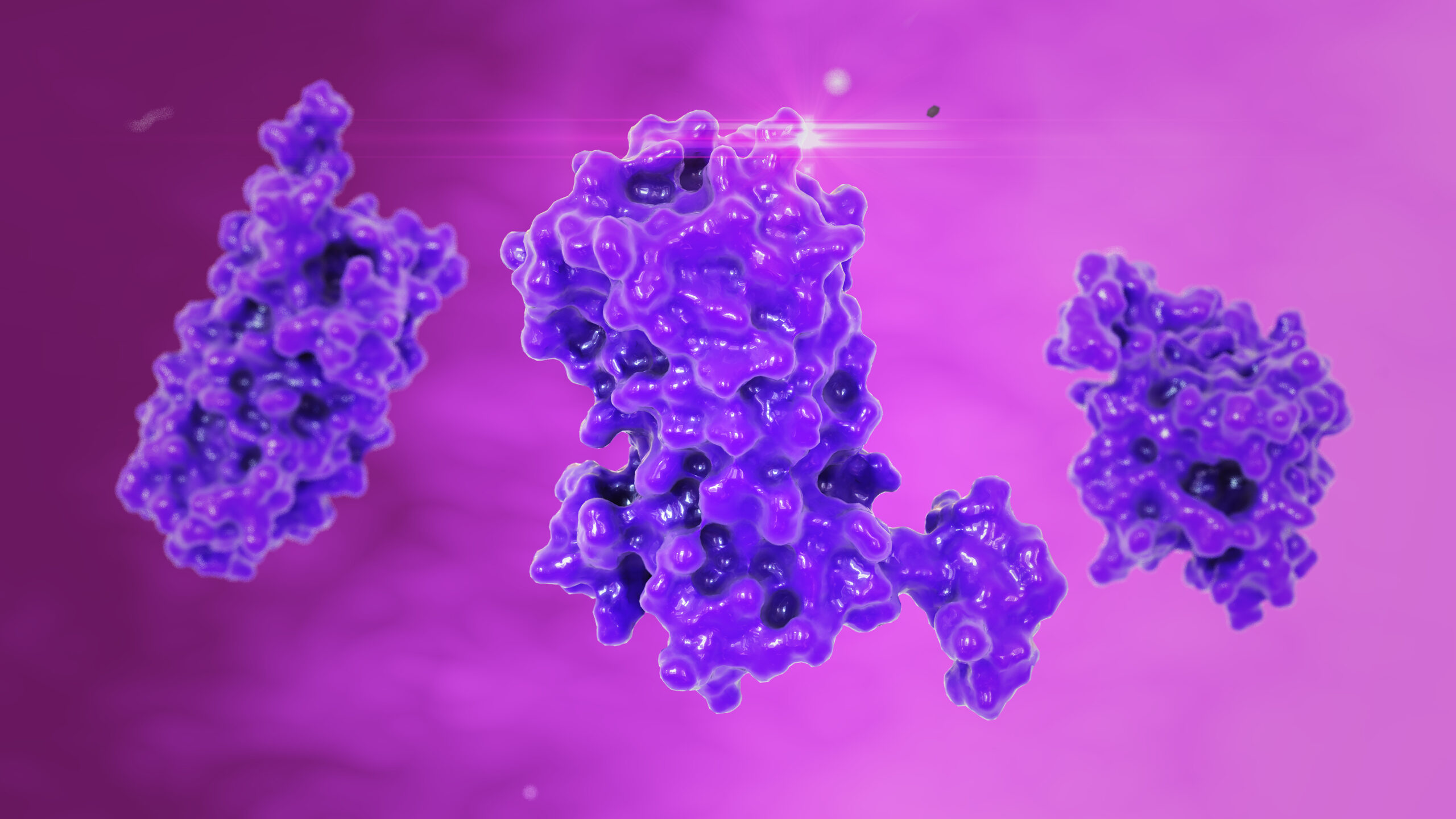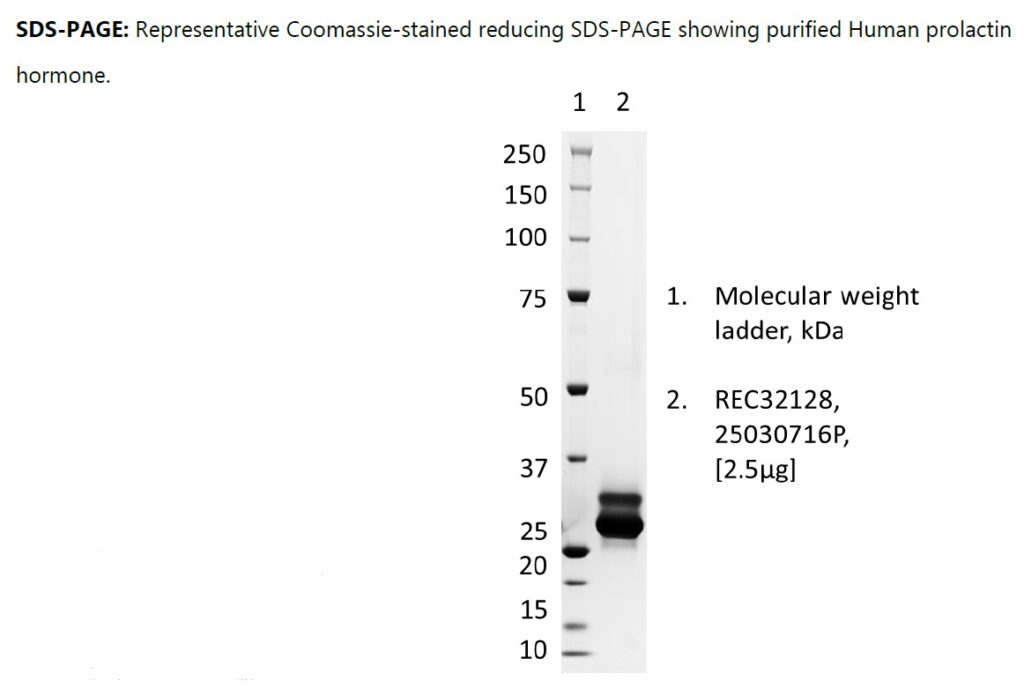Human Prolactin Hormone, Recombinant
Price range: $410.75 through $1,744.87 excl. VAT
Human prolactin hormone, produced in HEK293 cells with a C-terminal His-tag / 2x Strep-tag and purified by affinity chromatography and dialysis.
Human Prolactin Hormone, Recombinant
Human prolactin hormone, produced in HEK293 cells with a C-terminal His-tag / 2x Strep-tag and purified by affinity chromatography and dialysis.
PRODUCT DETAILS – Human Prolactin Hormone, Recombinant
- Tag: His-tag / 2xStrep-tag, C-Terminus
- Expressed and purified from HEK293 cells
- Presented as liquid in DPBS
- A sample of recombinant Prolactin diluted in a negative human plasma matrix to 40ng/ml returned a mean value 38.32ng/mL when tested using a Roche Cobas 6000 analyzer.
BACKGROUND
Prolactin (PRL) is a 198-amino-acid hormone secreted by the anterior pituitary gland, primarily responsible for lactation. Beyond its lactogenic role, PRL also influences reproductive health, immune responses, and metabolic regulation. Structurally related to growth hormone and placental lactogen, PRL mainly circulates as a biologically active monomer (23 kDa), while less active dimeric and polymeric forms, especially macroprolactin, may cause asymptomatic hyperprolactinemia. (Hattori, 2014).
Immunoassays remain the standard technique for measuring serum PRL levels to diagnose hyperprolactinemia, which can cause infertility, amenorrhea, or galactorrhea. However, macroprolactin, often biologically inactive, can falsely elevate results, leading to misdiagnosis and unnecessary treatments. To address this, polyethylene glycol (PEG) precipitation is commonly used to differentiate macroprolactin from biologically active forms (Fahie-Wilson & Smith, 2013).
To improve assay reliability, recombinant human prolactin has been introduced as a reference standard. Although the WHO recombinant PRL preparation (97/714) shows comparable immunoreactivity to earlier standards, some variability remains, requiring further validation before universal clinical use (WHO).
Recombinant prolactin enhances immunodiagnostic assays by providing a consistent, well-defined standard that reduces variability and eliminates interference from heterogeneous serum isoforms, resulting in more accurate, sensitive, and specific measurements.
REFERENCES
- Hattori N. Macroprolactinemia: new insights in hyperprolactinemia. J Clin Endocrinol Metab. 2014;99(6):2087–2095.
- Fahie-Wilson M, Smith TP. Determination of prolactin: the macroprolactin problem. Best Pract Res Clin Endocrinol Metab. 2013;27(5):725–742.
- WHO International Collaborative Study of the Proposed 4th International Standard for Prolactin, Human. [Accessed 04/2025].
You may also like…

Human Sex Hormone – binding globulin, Recombinant
Price range: $164.30 through $3,839.69 excl. VAT
Human Chorionic Gonadotropin Hormone (subunit alpha+beta), Recombinant
Price range: $164.30 through $3,839.69 excl. VAT
Human Follicle-stimulating Hormone (subunit alpha+beta), Recombinant
Price range: $164.30 through $3,491.38 excl. VAT


